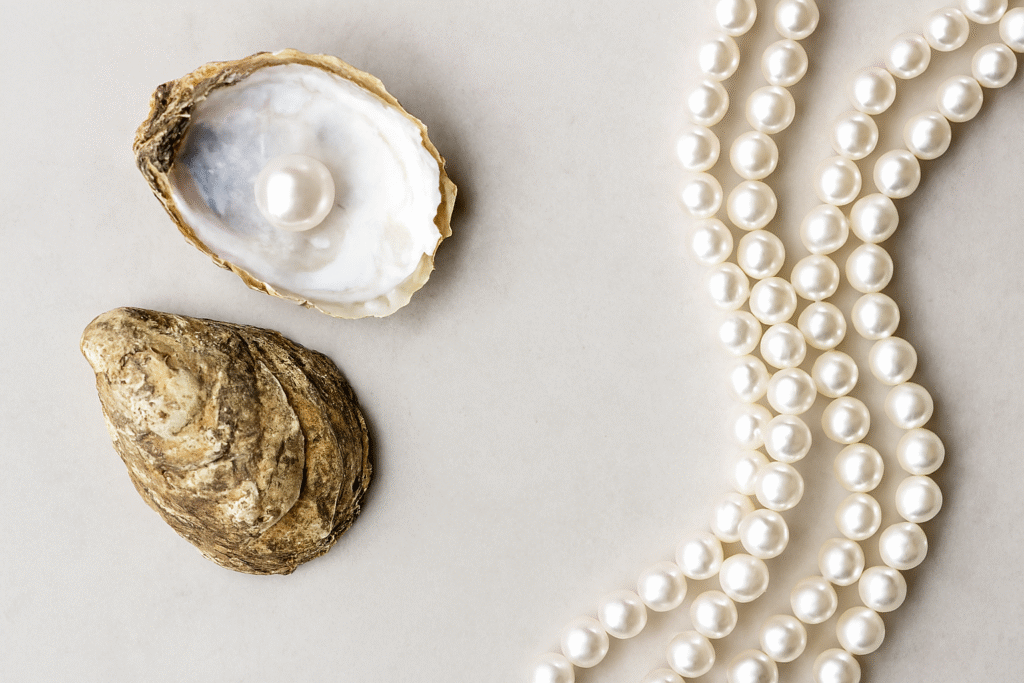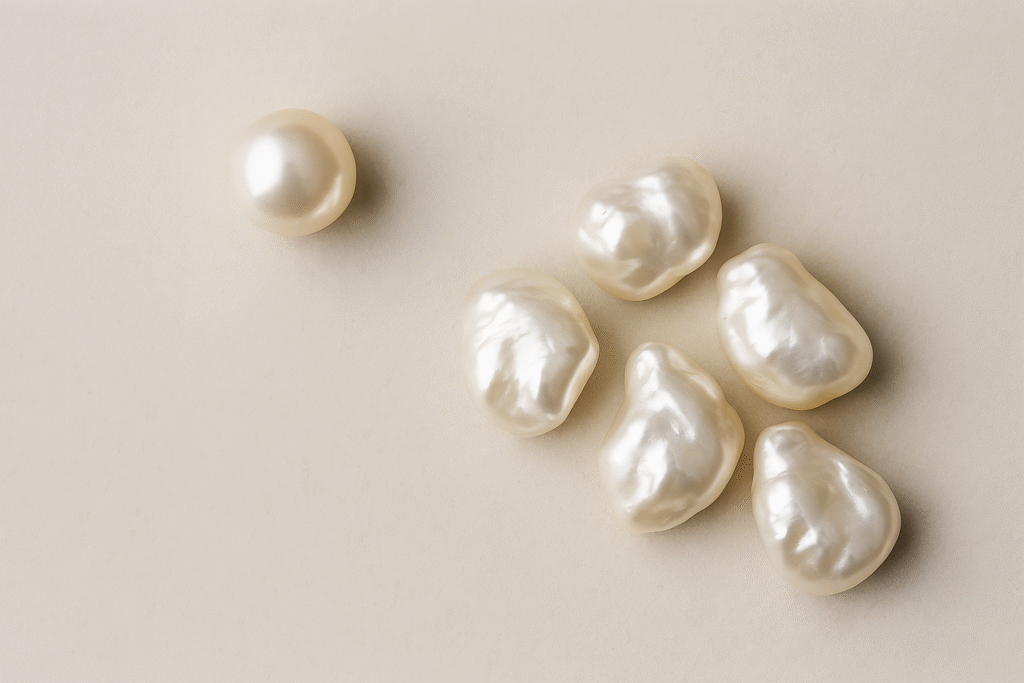Buying pearls online can be tricky. One of the most common mistakes buyers make is trusting a single, blurry product photo. Pearls are unique gems, and no two strands look the same. If you shop without enough details, you risk overpaying or receiving poor-quality pearls.
Why a Single Photo is Risky
- A blurry image hides blemishes and luster differences.
- You can’t judge surface quality or nacre thickness.
- Lighting tricks may misrepresent size and color.
- Without comparison shots, scale is misleading.
Research shows that over 70% of jewelry returns in e-commerce are due to misrepresentation of product photos. The key is to demand multiple angles and high-resolution close-ups.
How to Buy Pearls Online Safely
- Look for sellers offering at least 5–7 clear photos from different angles.
- Ask for a short video clip showing luster under natural light.
- Read a detailed product description covering size, origin, nacre thickness, and surface grade.
- Check for a transparent return policy with at least 7–14 days.
- Buy from reputable sellers with customer reviews and recognized memberships (e.g., Jewelers of America, GIA alumni).
Expert Tip
“The key is to never buy pearls online unless you can see how they reflect light. A high-luster pearl will show sharp reflections, even in photos.”
Q&A: Buying Pearls Online
Q: Can I trust stock photos of pearls?
A: No. Stock photos are generic and don’t represent the exact strand you’ll receive.
Q: What should a return policy include?
A: Clear instructions, free or low-cost returns, and no hidden restocking fees.
Q: How do I verify authenticity?
A: Look for certification, seller reputation, and ask for origin details (Akoya, Tahitian, South Sea, or Freshwater).
Case Example
A buyer in New York ordered a $500 strand based on one photo. The pearls arrived dull, off-round, and mismatched. After returning them, the buyer purchased from a GIA-trained seller who provided videos and detailed grading. The difference was clear: the second strand had 90% higher luster and matched size within 0.5 mm.
Learn more about grading pearls by luster and surface before making a purchase.
Compare pearls with gold jewelry buying mistakes to avoid.
Guide on hallmarking standards in jewelry for additional insights.
If you’re shopping in New York, read about certified diamond buying tips in NYC.
Small Luxury Hotels FAQ
Introduction
This small luxury hotels FAQ answers common questions about boutique stays. It explains definitions, differences with large chains, and which services to expect. In addition, it covers family options, sustainability, and tips on finding the right property.
What defines a small luxury hotel?
- Fewer than 100 rooms.
- Personalized attention and privacy.
- Strong links to local design.
- Locations in unique urban or rural areas.
As a result, travelers often choose them for a more intimate experience. Moreover, their distinctive style sets them apart from standardized hotels.
Why choose a small luxury hotel?
Personal service
Staff remember guest details, therefore creating a sense of familiarity.
Calm spaces
Unlike large hotels, these properties feel quieter, so you can relax more easily.
Local culture
For example, menus highlight regional produce, and interiors reflect local crafts.
In addition, many guests return because the experience feels authentic.
How do small luxury hotels differ from large chains?
Guest experience
Small hotels provide tailored attention, while chains rely on uniform systems.
Property identity
Each boutique hotel has its own theme. On the other hand, large chains repeat formats worldwide.
Dining approach
Menus change seasonally and locally. Therefore, guests enjoy fresh variety instead of standard global menus.
Are small luxury hotels only for leisure stays?
Business features
- Lounges double as meeting rooms.
- Private dining options support work dinners.
Digital needs
- Fast Wi-Fi supports remote work.
- Quiet spaces help concentration.
Because of these advantages, small luxury hotels appeal to both business and leisure travelers.
What services can you expect?
- Concierge services for tours and dining.
- Fine dining menus with seasonal ingredients.
- Spa and wellness treatments.
- Added extras like minibars and welcome gifts.
Moreover, services shift depending on location. For example, a city hotel might offer cultural tours, while a rural retreat offers farm experiences.
Are small luxury hotels family-friendly?
Options for families
- Connecting rooms for parents and children.
- Child-friendly amenities such as menus or games.
Adults-only stays
- Some properties focus on privacy.
- Guests find peaceful, child-free environments.
Therefore, always check booking policies, because each hotel sets its own approach.
Do these hotels support sustainability?
Sourcing and dining
Farm-to-table meals reduce transport impact. In addition, guests enjoy fresher produce.
Environmental focus
Plastic use is restricted, while refillable bottles are encouraged. Smart energy systems reduce wastage.
Local involvement
Hotels support the community by hiring regionally. As a result, growth extends beyond the property.
How do you find the right small luxury hotel?
Define needs
Decide if food, spa, culture, or privacy is your top priority.
Check guest feedback
For example, repeat reviews about service often signal consistency.
Compare value
Packages may include meals, transfers, or early check-in. Therefore, higher prices can still deliver stronger value.
Are small luxury hotels worth the price?
Value of service
Guests pay for attention, comfort, and privacy. Moreover, experiences feel tailored and unique.
Extras add value
Some hotels include exclusive experiences or benefits. Finally, weigh these extras against nightly rates.
As a result, many travelers feel these hotels justify their price when quality matters most.



